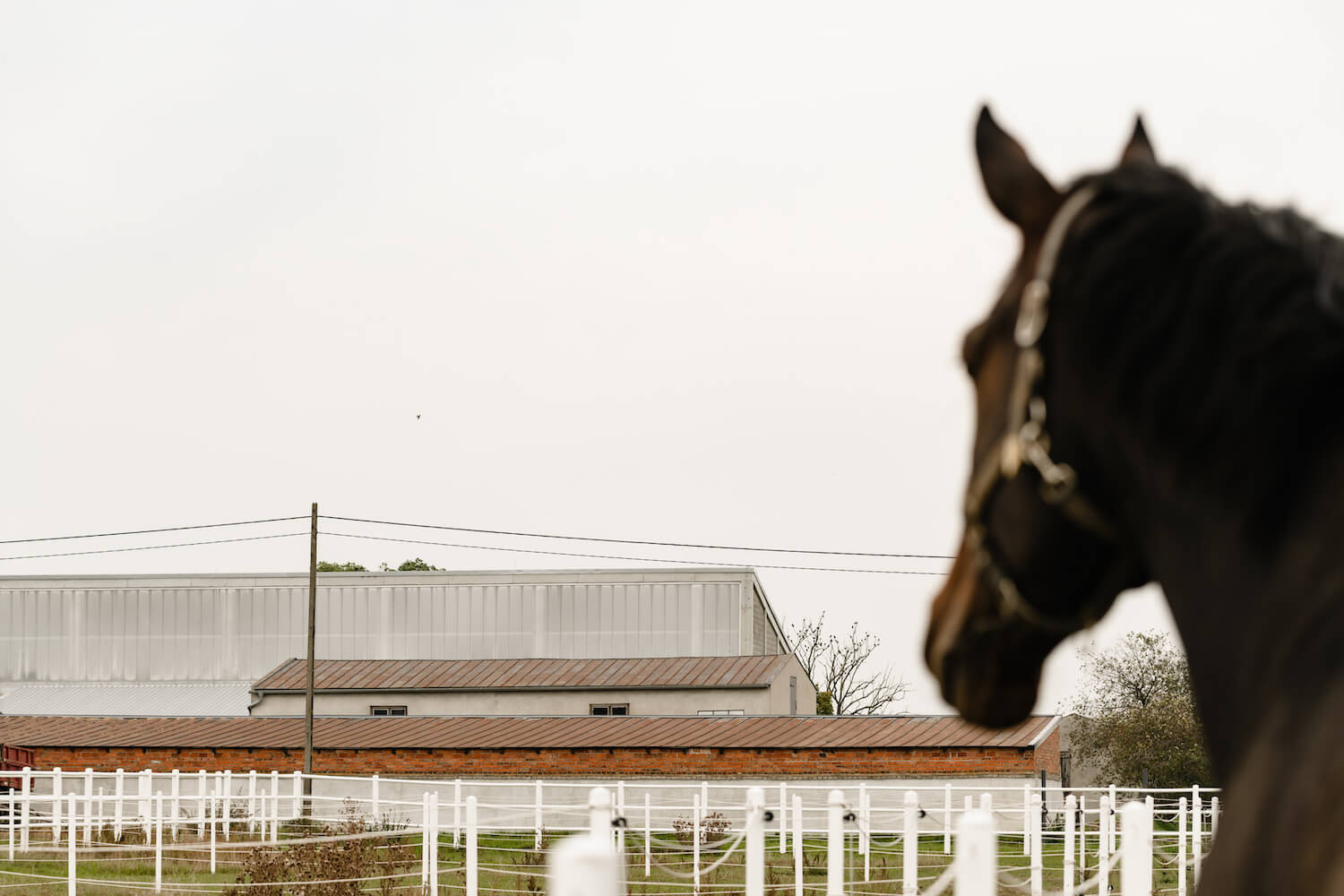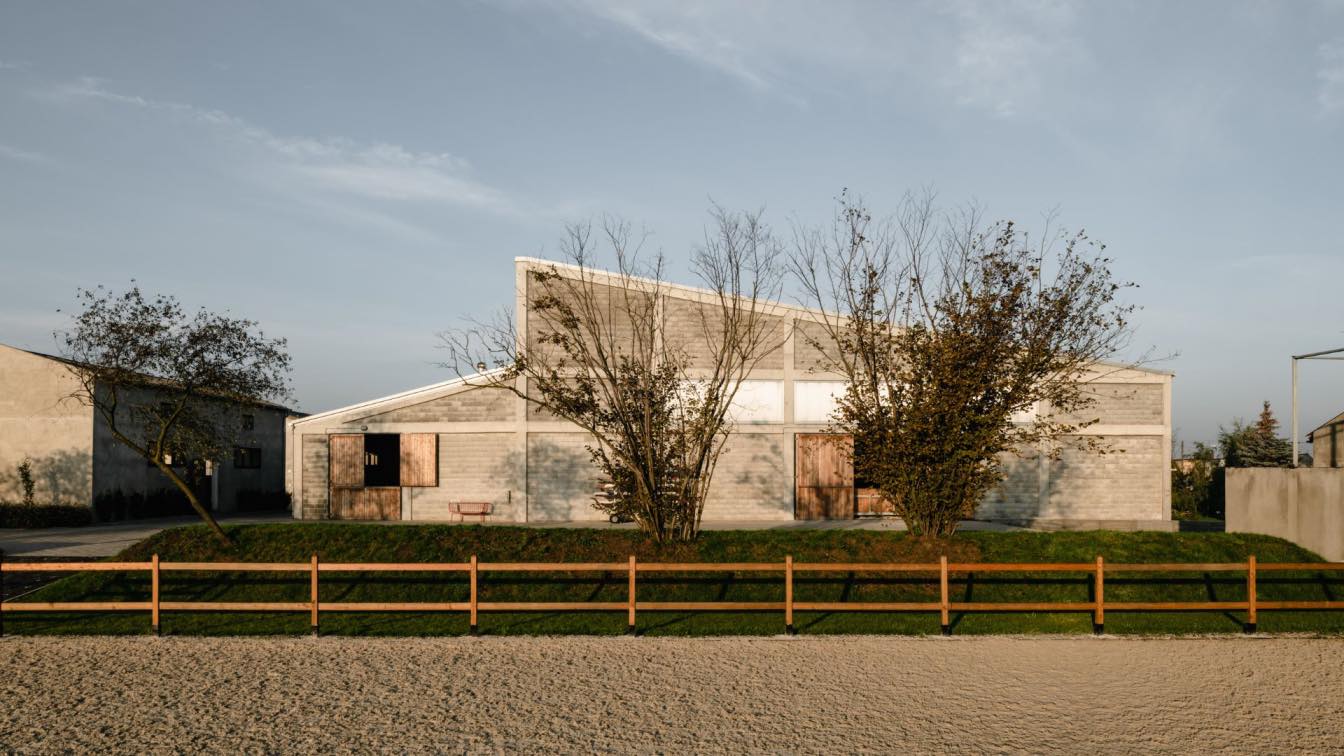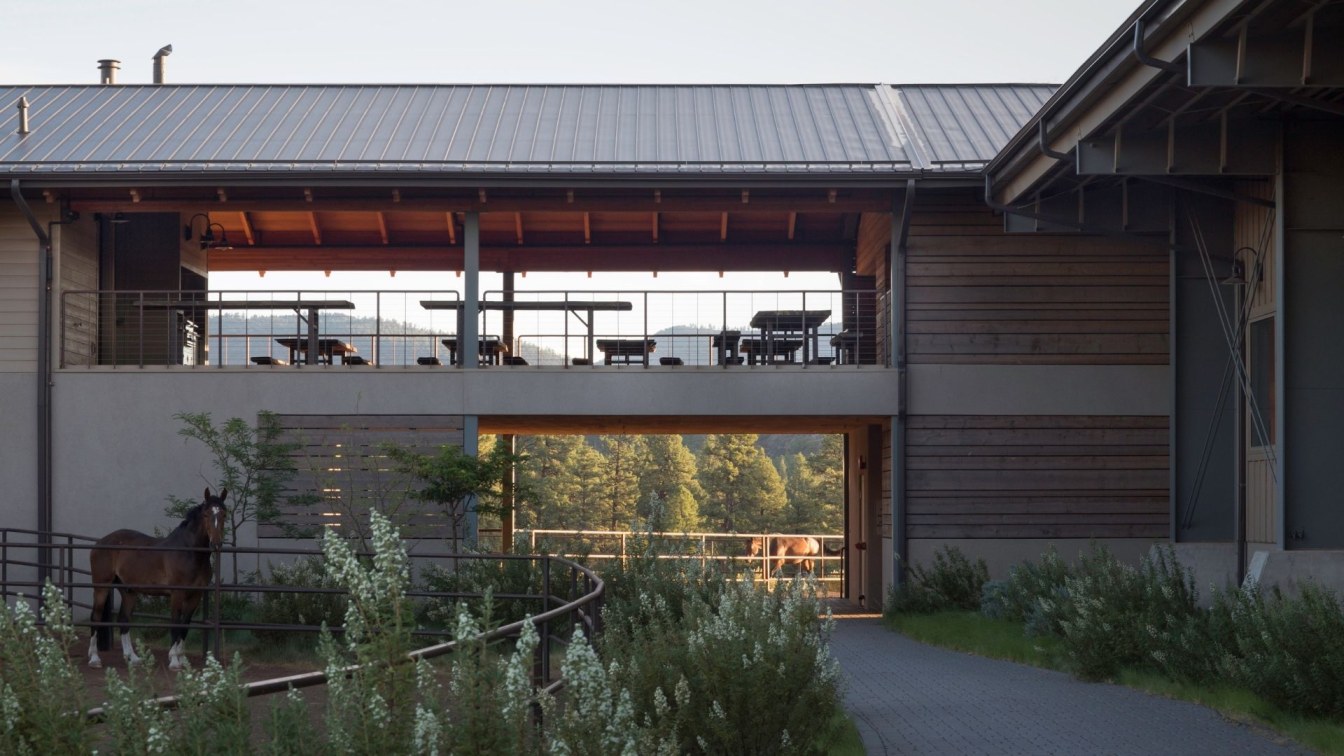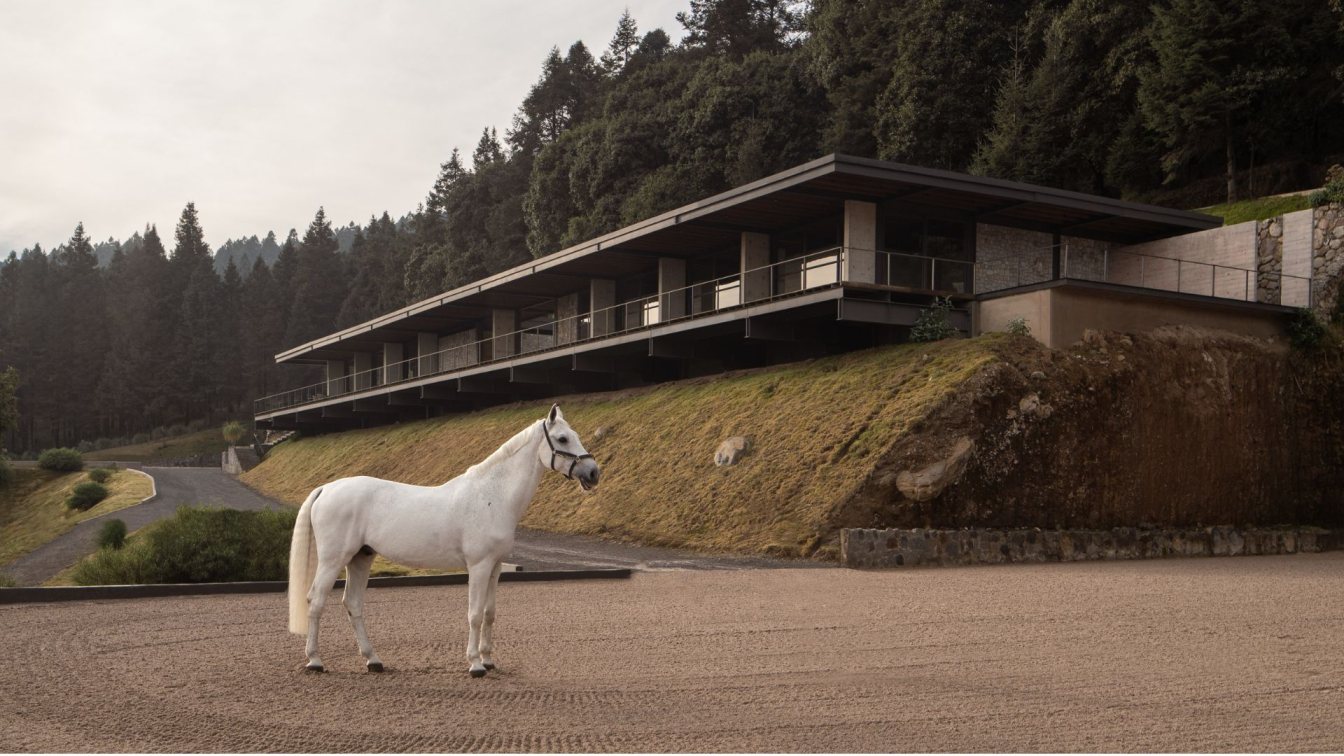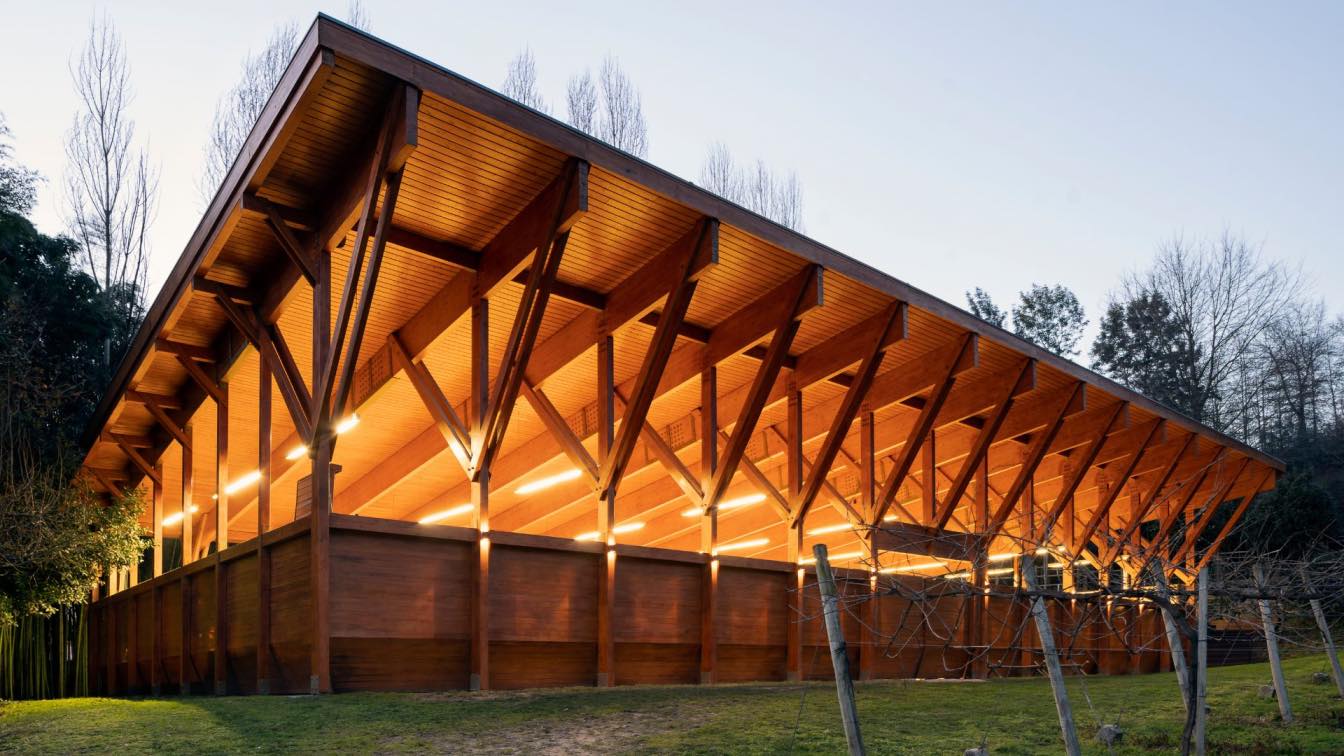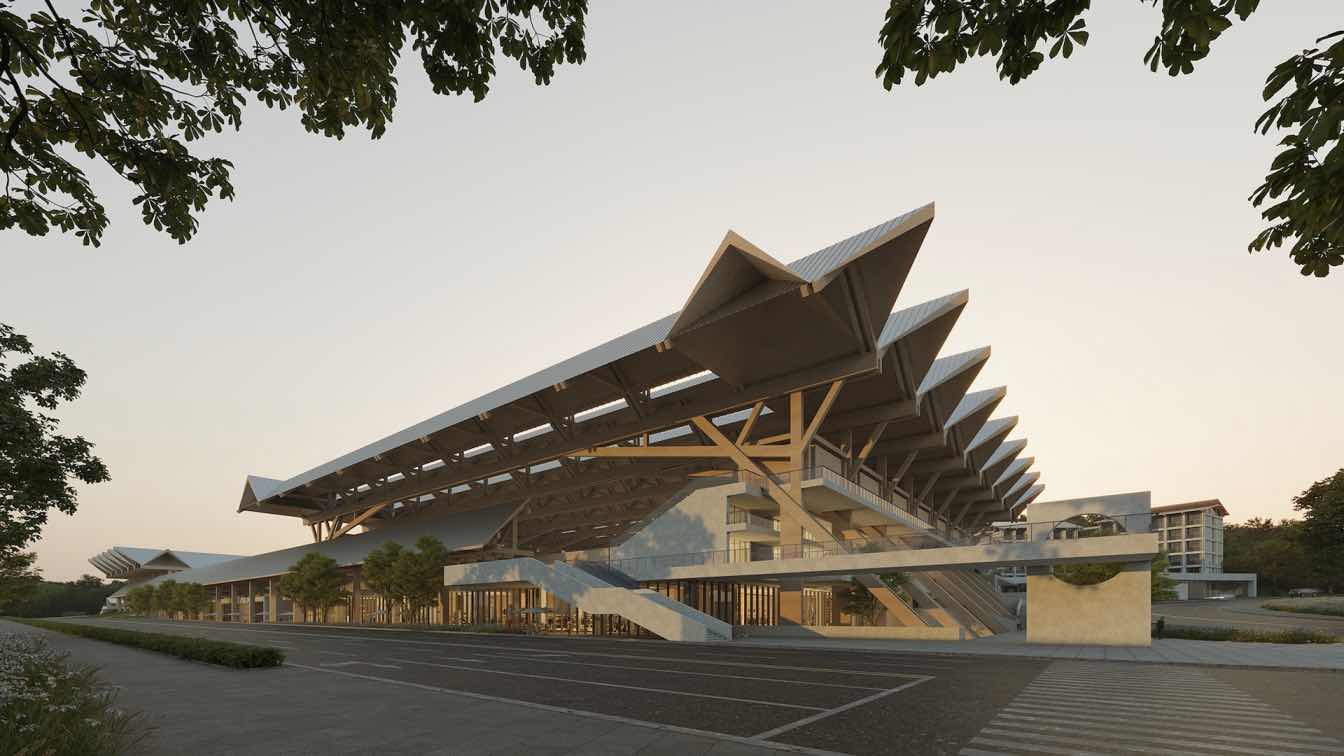Wiercinski-Studio: The raw, honest and cozy stable is set in a rural landscape surrounded by dense buildings and picturesque fields. The Horse House is a new facility for breeding and training infrastructure of the Ludwiczak Stables.
Context
The village of Jaroszewo is built up with houses and farm buildings with varied materials, shapes, scale and geometry of the roofs. There are picturesque fields all around, cut by the nearby expressway. The Horse House fits into a densely built-up plot with a house, existing stables and farm buildings.
Function
The building consists of a full-size hall for training with obstacles, a stable with eighteen stalls for horses, a warehouse, and a social area with a kitchen, study, tack room and a viewing area on the mezzanine. The layout of functions in the building has been adapted to the existing buildings, the part with the new stable is located opposite the old stables and the horses have the opportunity to look at each other.
Shape
The object was placed between the house and two existing stable buildings, continuing their direction of roofs. The required function determined the dimensions, which were adapted to the existing buildings and communication system of the plot. The ridge of the building was moved to create mono-pitched roofs over internal spaces of different heights. The lowering of the roof over the stables matched the building in scale to the old stables and created a human-like walkway between. A vertical fault in the block was used as a skylight to the running hall. The corners of the building have been moved to the center to maintain the convenience of communication among tight buildings. The building with a characteristic shape fits in with the diverse surroundings, and the vertical skylight brings to mind inspirations from the surrounding industrial facilities with sawtooth roof structures. The visible structure of the building creates a distinct three-dimensional drawing on the façade, highlighted by the shadow play. There are a lot of unplastered buildings in the area with visible structural elements. The Horse House interprets this landscape in a contemporary way and the quality and durable materials will make it age and patinate well.

Materials
The building, expressive, but modest in detail, blends in with the rural surroundings through the use of natural and raw materials. Concrete blocks are perfect as a material for single-layer walls and filling reinforced concrete structures. The walls did not need additional finishing from the outside and inside of the building, which reduced building materials and construction time. The roughness and tectonics of the walls are warmed up by natural wooden gates and beams made of glued wood. The concrete structure is also filled in places with polycarbonate as an economical alternative to window joinery with glass. This material works great as lighting the hall from the south, because it breaks up and lets soft light into the interior without creating sharp chiaroscuro on the ground, which can scare horses. It is a matt surface that is also safe for birds and in the evening the building shines gently like a lantern. Covering the lower roof with silver trapezoidal sheet responds well to weather conditions and changes colors with the surroundings.
Interiors
The idea of using construction materials is also coherently reflected inside the building. Uncovered installations, visible structure is a continuation of the sincerity and austerity of the building. This space is complemented by an original single series of furniture, lighting and details emphasizing the unique and individual character of the place, and made of steel and wood by local craftsmen.






